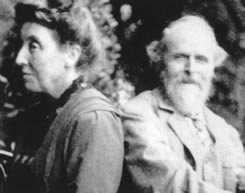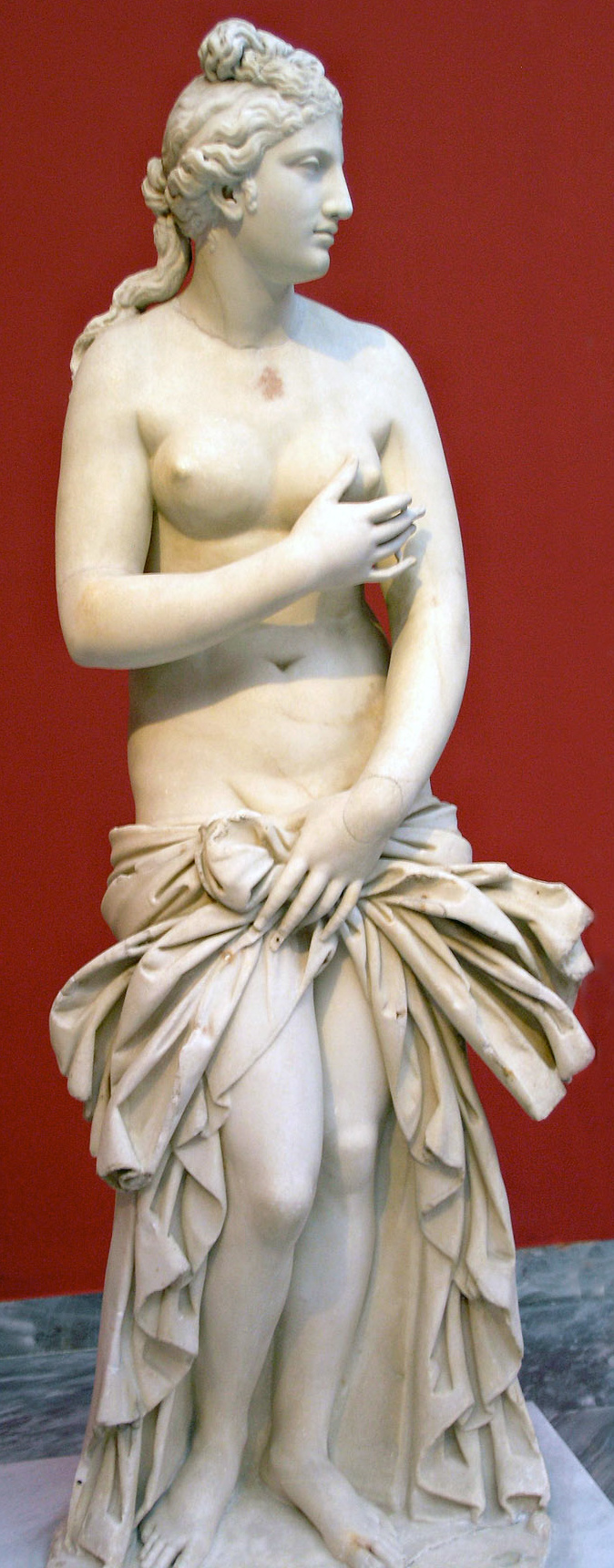|
Dryad
A dryad (; el, Δρυάδες, ''sing''.: ) is a tree nymph or tree spirit in Greek mythology. ''Drys'' (δρῦς) signifies " oak" in Greek, and dryads were originally considered the nymphs of oak trees specifically, but the term has evolved towards tree nymphs in general,Graves, ch. 86.2; p. 289 or human-tree hybrids in fantasy. Often their life force was connected to the tree in which they resided and they were usually found in sacred groves of the gods. They were considered to be very shy creatures except around the goddess Artemis, who was known to be a friend to most nymphs. Types Daphnaie These were nymphs of the laurel trees. Epimelides The Maliades, Meliades or Epimelides were nymphs of apple and other fruit trees and the protectors of sheep. The Greek word ''melas'', from which their name derives, means both apple and sheep. Hesperides, the guardians of the golden apples were regarded as this type of dryad. Hamadryad Dryads, like all nymphs, were supernat ... [...More Info...] [...Related Items...] OR: [Wikipedia] [Google] [Baidu] |
Evelyn De Morgan
Evelyn De Morgan (30 August 1855 – 2 May 1919), née Pickering, was an English painter associated early in her career with the later phase of the Pre-Raphaelite Movement, and working in a range of styles including Aestheticism and Symbolism. Her paintings are figural, foregrounding the female body through the use of spiritual, mythological, and allegorical themes. They rely on a range of metaphors (such as light and darkness, transformation, and bondage) to express what several scholars have identified as spiritualist and feminist content. De Morgan boycotted the Royal Academy and signed the Declaration in Favour of Women's Suffrage in 1889. Her later works also deal with the themes of war from a pacifist perspective, engaging with conflicts like the Second Boer War and World War I. Early life She was born Mary Evelyn Pickering at 6 Grosvenor Street, to Percival Pickering QC, the Recorder of Pontefract, and Anna Maria Wilhelmina Spencer Stanhope, the sister of the a ... [...More Info...] [...Related Items...] OR: [Wikipedia] [Google] [Baidu] |
Nymph
A nymph ( grc, νύμφη, nýmphē, el, script=Latn, nímfi, label=Modern Greek; , ) in ancient Greek folklore is a minor female nature deity. Different from Greek goddesses, nymphs are generally regarded as personifications of nature, are typically tied to a specific place or landform, and are usually depicted as maidens. They were not necessarily immortal, but lived much longer than human beings. They are often divided into various broad subgroups, such as the Meliae (ash tree nymphs), the Dryads (oak tree nymphs), the Naiads (freshwater nymphs), the Nereids (sea nymphs), and the Oreads (mountain nymphs). Nymphs are often featured in classic works of art, literature, mythology, and fiction. Since the Middle Ages, nymphs have been sometimes popularly associated or even confused with fairies. Etymology The Greek word has the primary meaning of "young woman; bride, young wife" but is not usually associated with deities in particular. Yet the etymology of the noun rem ... [...More Info...] [...Related Items...] OR: [Wikipedia] [Google] [Baidu] |
Greek God
The following is a list of gods, goddesses, and many other divine and semi-divine figures from ancient Greek mythology and ancient Greek religion. Immortals The Greeks created images of their deities for many purposes. A temple would house the statue of a god or goddess, or multiple deities, and might be decorated with relief scenes depicting myths. Divine images were common on coins. Drinking cups and other vessels were painted with scenes from Greek myths. Major gods and goddesses Greek primordial deities Titans and Titanesses The Titan gods and goddesses are depicted in Greek art less commonly than the Olympians. File:Eos Memnon Louvre G115.jpg, Eos (Dawn) and the hero Memnon (490–480 BC) File:Ilion---metopa.jpg, Helios in his four-horse chariot (3rd century BC) File:0029MAN-Themis.jpg, Themis, from the Temple of Nemesis (ca. 300 BC) File:Antakya Arkeoloji Muzesi 02366 nevit.jpg, Oceanus wearing crab-claw horns, with Tethys ( Roman-era mosaic) File:Creation Prometh ... [...More Info...] [...Related Items...] OR: [Wikipedia] [Google] [Baidu] |
Erato (dryad)
In Greek mythology, Erato (; Ancient Greek: Ἐρατώ "desired" or "lovely") was a dryad. She was the priestess and prophetess of the god Pan, verses were attributed to her at an ancient oracle of the god, located at Megalopolis near Acacesium. Erato was married to Arcas, the son of Zeus and Callisto, and bore him three sons, Azan, Apheidas, and Elatus There were several figures named Elatus or Élatos (Ancient Greek: Ἔλατος means "ductile") in Greek mythology. * Elatus, a son of Arcas by either Leaneira (or Laodameia), Meganeira, Chrysopeleia or Erato and the brother of Apheidas and ....Pausanias. ''Description of Greece, 8.37.11; 8.37.12.'' Notes References * Pausanias, ''Description of Greece'' with an English Translation by W.H.S. Jones, Litt.D., and H.A. Ormerod, M.A., in 4 Volumes. Cambridge, MA, Harvard University Press; London, William Heinemann Ltd. 1918. Online version at the Perseus Digital Library* Pausanias, ''Graeciae Descriptio.'' ''3 vols''. L ... [...More Info...] [...Related Items...] OR: [Wikipedia] [Google] [Baidu] |
Greek Mythology
A major branch of classical mythology, Greek mythology is the body of myths originally told by the ancient Greeks, and a genre of Ancient Greek folklore. These stories concern the origin and nature of the world, the lives and activities of deities, heroes, and mythological creatures, and the origins and significance of the ancient Greeks' own cult and ritual practices. Modern scholars study the myths to shed light on the religious and political institutions of ancient Greece, and to better understand the nature of myth-making itself. The Greek myths were initially propagated in an oral-poetic tradition most likely by Minoan and Mycenaean singers starting in the 18th century BC; eventually the myths of the heroes of the Trojan War and its aftermath became part of the oral tradition of Homer's epic poems, the '' Iliad'' and the '' Odyssey''. Two poems by Homer's near contemporary Hesiod, the '' Theogony'' and the '' Works and Days'', contain accounts of the genes ... [...More Info...] [...Related Items...] OR: [Wikipedia] [Google] [Baidu] |
Meliae
In Greek mythology, the Meliae (also called Meliads) (; grc, Μελίαι, or , ) were usually considered to be the nymphs of the ash tree, whose name they shared. Mythology According to Hesiod, the Meliae (probably meaning all tree-nymphs) were born from the drops of blood that fell on Gaia arthwhen Cronus castrated Uranus. In Hesiod's ''Works and Days'', the ash trees, perhaps meaning the Melian nymphs, are said to have been the progenitors of the generation of men belonging to Hesiod's Bronze Age. The Meliae were nurses of the infant Zeus in the Cretan Dikti mountains, according to the 3rd century BC poet Callimachus, ''Hymn to Zeus'', where they fed him on the milk of the goat Amalthea and honey. Callimachus appears to make the Theban nymph Melia, who was, by Apollo, the mother of Tenerus and Ismenus, one of the "earth-born" Meliae. Elsewhere, however, this Melia is an Oceanid, one of the many daughters of Oceanus and Tethys.Pindar, ''Paean 9'' fr. 52k 38–46; ... [...More Info...] [...Related Items...] OR: [Wikipedia] [Google] [Baidu] |
Phoebe (Greek Myth)
In Greek mythology, Phoebe ( ; grc, Φοίβη, Phoíbē, associated with ''phoîbos'', "shining") was the name or epithet of the following characters: * Phoebe (Titaness), one of the Titans, grandmother of Apollo and Artemis. * Phoebe (daughter of Leucippus), daughter of Leucippus. * Phoebe, a hamadryad who became one of King Danaus' many wives or concubines and possible mother of some of these Danaïdes: Hippodamia, Rhodia, Cleopatra, Asteria, Glauce, Hippomedusa, Gorge, Iphimedusa and Rhode.Apollodorus2.1.5/ref> Apollodorus only identified these daughters of Danaus by Phoebe and Atlantia (another hamadryad), not specifying who was the daughter of the other. These ten women joined the sons of Aegyptus who were begotten on an Arabian woman. Later on, these princesses slew their cousin-husbands during their wedding night. According to Hippostratus, Danaus had all of his progeny by a single woman, Europe, daughter of the river-god Nilus. In some accounts, he married hi ... [...More Info...] [...Related Items...] OR: [Wikipedia] [Google] [Baidu] |
Danaus
In Greek mythology, Danaus (, ; grc, Δαναός ''Danaós'') was the king of Libya. His myth is a foundation legend of Argos, one of the foremost Mycenaean cities of the Peloponnesus. In Homer's ''Iliad'', " Danaans" ("tribe of Danaus") and " Argives" commonly designate the Greek forces opposed to the Trojans. Family Parents and siblings Danaus, was the son of King Belus of Egypt and the naiad Achiroe, daughter of the river god Nilus, or of Sida, eponym of Sidon. He was the twin brother of Aegyptus, king of Egypt while Euripides adds two others, Cepheus, King of Ethiopia and Phineus, betrothed of Andromeda. Danaides Danaus had fifty daughters, the Danaides, twelve of whom were born to the naiad Polyxo; six to Pieria; two to Elephantis; four to Queen Europa; ten to the hamadryad nymphs Atlanteia and Phoebe; seven to an Ethiopian woman; three to Memphis; two to Herse and lastly four to Crino. According to Hippostratus, Danaus had all these progeny begotten ... [...More Info...] [...Related Items...] OR: [Wikipedia] [Google] [Baidu] |
Bibliotheca (Pseudo-Apollodorus)
The ''Bibliotheca'' (Ancient Greek: grc, Βιβλιοθήκη, lit=Library, translit=Bibliothēkē, label=none), also known as the ''Bibliotheca'' of Pseudo-Apollodorus, is a compendium of Greek mythology, Greek myths and Greek hero, heroic legends, arranged in three books, generally dated to the first or second century AD. The author was traditionally thought to be Apollodorus of Athens, but that attribution is now regarded as false, and so "Pseudo-" was added to Apollodorus. The ''Bibliotheca'' has been called "the most valuable mythographical work that has come down from ancient times." An epigram recorded by the important intellectual Patriarch Photius I of Constantinople expressed its purpose:Victim of its own suggestions, the Epigraph (literature), epigraph, ironically, does not survive in the manuscripts. For the classic examples of Epitome, epitomes and Encyclopedia, encyclopedias substituting in Christian hands for the literature of Classical Antiquity itself, see Isido ... [...More Info...] [...Related Items...] OR: [Wikipedia] [Google] [Baidu] |
Chrysopeleia
In Greek mythology, Chrysopeleia (; Ancient Greek: ''Χρυσοπέλεια'') was a hamadryad nymph. Mythology The most prolonged account of her is given in John Tzetzes' scholia on Lycophron, and runs as follows. The tree in which Chrysopeleia dwelt was put in danger by the waters of a flooding river. She was rescued by Arcas, who happened to be hunting in the neighborhood: he rerouted the river and secured the tree with a dam. Chrysopeleia became his lover and bore him two sons, Apheidas and Elatus. Chrysopeleia is also mentioned in the '' Bibliotheca'' as one of the possible spouses of Arcas.Pseudo-Apollodorus, ''Bibliotheca'' 3.9.1 Notes References * Pseudo-Apollodorus The ''Bibliotheca'' (Ancient Greek: grc, Βιβλιοθήκη, lit=Library, translit=Bibliothēkē, label=none), also known as the ''Bibliotheca'' of Pseudo-Apollodorus, is a compendium of Greek myths and heroic legends, arranged in three book ..., ''The Library'' with an English Translation by Si ... [...More Info...] [...Related Items...] OR: [Wikipedia] [Google] [Baidu] |
Lycophron
Lycophron (; grc-gre, Λυκόφρων ὁ Χαλκιδεύς; born about 330–325 BC) was a Hellenistic Greek tragic poet, grammarian, sophist, and commentator on comedy, to whom the poem ''Alexandra'' is attributed (perhaps falsely). Life and miscellaneous works He was born at Chalcis in Euboea, and flourished at Alexandria in the time of Ptolemy Philadelphus (285–247 BC). According to the ''Suda'', the massive tenth century Byzantine Greek historical encyclopaedia, he was the son of Socles, but was adopted by Lycus of Rhegium. He was entrusted by Ptolemy with the task of arranging the comedies in the Library of Alexandria; as the result of his labours he composed a treatise ''On Comedy''. Lycophron is also said to have been a skilful writer of anagrams. Tragedies The poetic compositions of Lycophron chiefly consisted of tragedies, which secured him a place in the Pleiad of Alexandrian tragedians. The ''Suda'' gives the titles of twenty tragedies, of which a very few fr ... [...More Info...] [...Related Items...] OR: [Wikipedia] [Google] [Baidu] |




